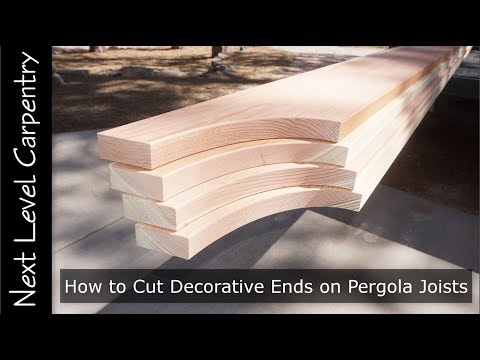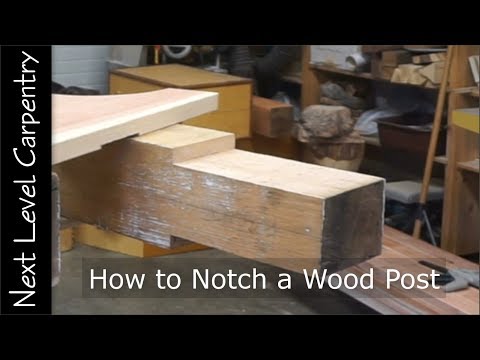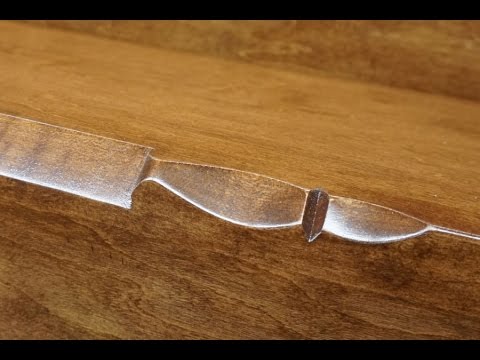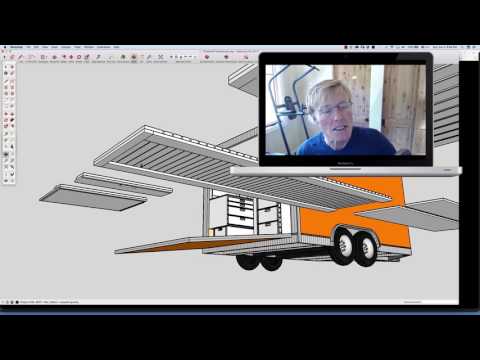When it comes to drawing lines and marking lumber, there's no substitute for a well-sharpened carpenter's pencil. Do you ever wonder why they're not round? Wrong! Pencils are much easier to sharpen, even with a broken lead. A few turns of the crank, and they're good as new. The point can be made legal sharp with a few wipes on a piece of sandpaper. So why don't carpenters carry those around in their polisher behind their ears instead? Well, for me, the answer is simple: rectangular lead draws better lines on wood.
Flat pencils are better than round pencils, and not just because they won't roll off the roof
A round pencil can be thick, too, but the point is fragile. It doesn't take much to snap the tip off. Point wears down quickly, making it tough to draw a long fine line. A properly sharpened carpenter's pencil is the best of both worlds: a fine tip that is sturdy, so a long sharp line can be drawn even on rough lumber or sheet goods. And a sharp line equals accurate cuts. Even though the carpenter pencil lead looks thick and stubby, when it's turned on edge, you can see it's razor-sharp. A similar sharpness to this round pencil, but the test is how long of a thin line can each of these tips draw.
The round lead pencil starts out with a nice sharp line that quickly degrades. The carpenter's pencil starts sharp and stays sharp. The proof is in the width of the line at the end of only six feet. The width of the line from the round pencil is nearly twice as thick as the line drawn by the carpenter's pencil. Without resharpening, I was able to draw ten lines with the carpenter's pencil before the line width equaled that of the first line drawn with the round pencil.
But a poorly sharpened carpenter's pencil with a nasty point on it—it looks like it was too sharp by a rabid squirrel—won't get the job done either. So here's a quick lesson on how I sharpen them.
Sharpening a simple tip on a carpenter's pencil
Sharpening a carpenter's pencil with a classic point is nothing more than whittling with a purpose. Make sure you have a sharp knife and whittle flat faces first, taking a number of passes to get down to the lead. This is when I shave the lead to make it thinner and sharper at the end. Flip around and do the other side. Finish whittling the sharp edge on the lead. The point to be made very sharp this way because there's still pencil wood on each side of the lead to support it while it's being shaved. Next, I do the edges, angling down to the lead, a slight turn at the end, and I like to put one final pass on these sharp corners just to make it pretty. That's about all there is to it.
Sharpening a simple tip for rough surfaces
When I have lines to draw on a rough surface like concrete, concrete block, or stucco, I sharpen the pencil in the classic style but leave the lead blunt so that it has a chance of drawing a line on the rough surface without crumbling. The process is the same. Leave the lead exposed a little bit shorter, and don't whittle it to a sharp point, the same as the classic point but with a blunt tip. If I'm able to draw visible lines on very rough surfaces...
The offset scribe point on a carpenter's pencil
...the flat faces and rectangular lead of a carpenter's pencil make it ideal for scribing boards to uneven surfaces. The tip of the classic point is good for scribes up to about an eighth of an inch. When the amount to be scribed is more than an eighth of an inch, the tip of the classic point isn't enough to reach the scribing amount. That's when I employ the offset tip scribe point. By sharpening the tip off-center to the face of the pencil, I can get a scribe distance of 3/8 of an inch pretty easily. The method for sharpening the classic point and the offset point are very similar, but I'll go through the steps to show you how I do it.
Instead of starting with the faces, I start with the edges. The goal is to pare down to the far side of the lead. Take some fairly long sweeping cuts to get down there because we're exposing the lead, making a real fine point. This can be fragile and take a couple of tries, but we'll see how we do on our first attempt here. I still got a little bit of lead left. I'm going to keep paring down until I get to the other edge of the lead or just right there. With one edge pared down, I'll sharpen the other side, which doesn't need to start as far back on the pencil this time. We just kiss the lead and give it a sharp point.
You can see how it's razor-sharp, but the tip doesn't snap off because of the wood on each side. Now I can carefully clean up the sides to expose the lead for its scribe point. Sneaking up on it, these sector passes just kind of clean things up, and that is what I call the offset scribe point. Describing the point in this way lets me easily get a 3/8-inch offset scribe without using an extra scribe block or anything. Sometimes it's just the ticket. If the pencil's turned the other way, you can see the scribe is less but it still might be useful. Getting three options for scribing just from a pencil, the classic point being the shortest and the full offset being the greatest.
Masterclass: sharpening a projected point for intricate scribing
Sometimes, I need to do an unusually demanding scribing task. When a classic point makes it difficult to get an accurate scribe to a surface because of the offset between the face of the pencil and the center of the lead, it's difficult to get an accurate scribe in an unusual situation. When regular pencils and scribing methods don't work, I reach for the most unusually sharpened pencil in my arsenal. By planing down the face of the pencil and then using a sanding block, the face of the pencil lead and the point of the pencil are all in a single plane. So that I can easily project a line to be scribed off of a flat surface, as you can tell, I contrived this scenario to show how a pencil sharpened with a projected point can scribe some pretty unusual things with little effort, quite accurately.
Don't ask me why I'd ever need to describe a piece of 2 by 3 vertical grain Douglas-fir through a piece of six-inch crown molding, but if I had to, this is how I'd do it. Hopefully, I've shown that a pencil sharpened in this unusual manner can be quite helpful in a sticky situation.
And this is how I go about sharpening a projected point on a carpenter's pencil. Starting with a square end on a pencil, simply use a block plane to shave a very shallow angle on one face of the pencil. Once the face is shaved sufficiently, the next step is to smooth it up and true it up on a piece of sandpaper supported by something flat and solid. It kind of makes a mess, but it gets the job done. Once that's taken care of, the other steps are pretty simple. And it's really essential for this lead to have a sharp knife; otherwise, that fragile tip of that little just snaps off.











